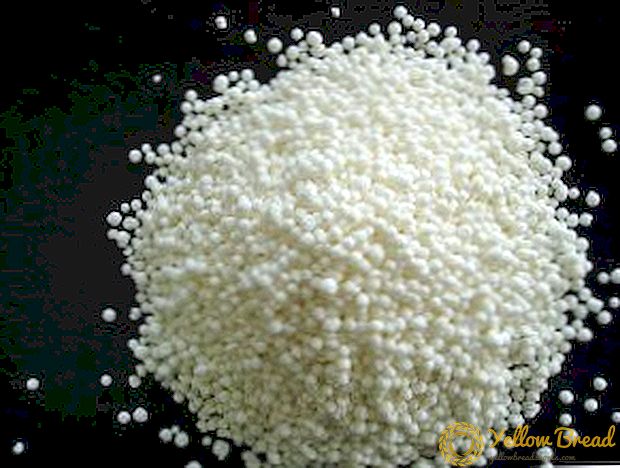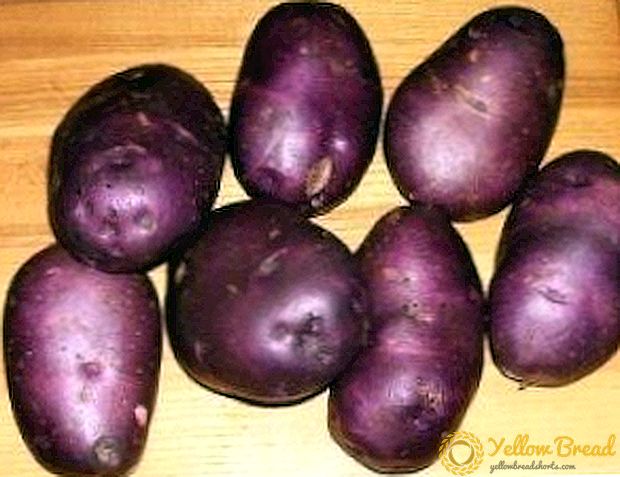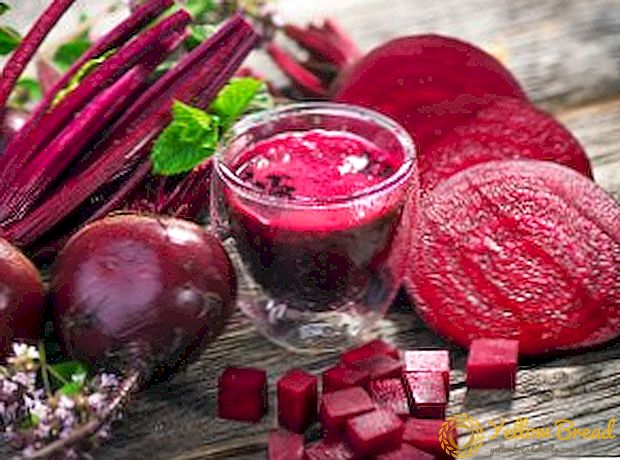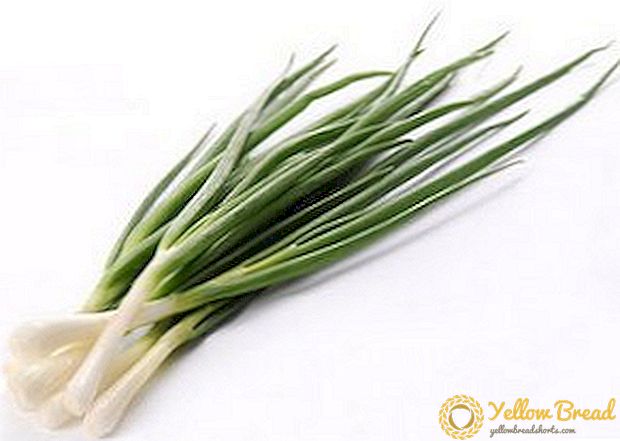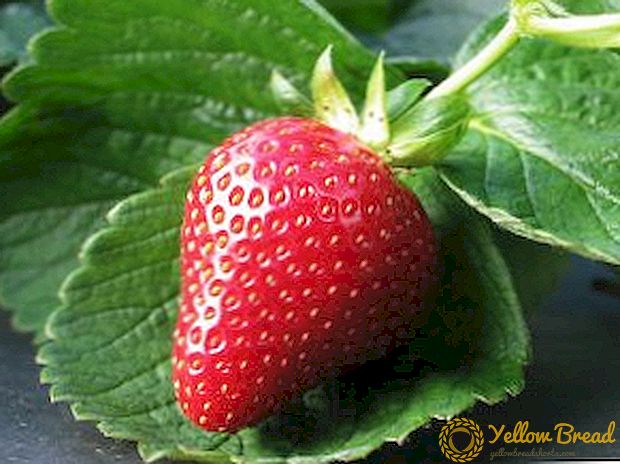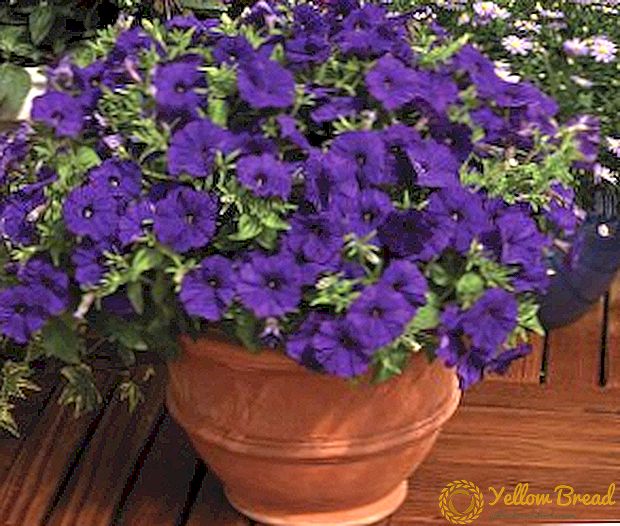 The word "rust" most associated with metal.
The word "rust" most associated with metal.
It turns out that it is also called a kind of fungal disease of various plants, which is capable of destroying most of the plantings, if not deal with it.
- What is dangerous rust
- Signs of defeat
- Risk group
- How to deal with rust on plants
- On fruit trees
- Rust on coniferous trees
- On the berry bushes
- On vegetables
- On cereals
- On indoor plants
What is dangerous rust
Rusting plants not only spoil the appearance of the plant, but also destroy it from the inside. First, they attack the leaves, then move to the stems, flowers and fruits. As a result, the process of photosynthesis and metabolism is disturbed, the affected plant suffers moisture deficiency, which leads to leaf fall.
The loss of leaves prematurely undermines the immunity of plants, they endure worse the winter, the quality and quantity of crops decrease in fruit crops, and in ornamental plants the flowers become smaller and smaller, the plant looks depressed and slowly dies.  Flour from affected cereals will not have the properties necessary for baking bread. The fungi that cause this disease are carried by wind, through the air, with water and this is especially dangerous.
Flour from affected cereals will not have the properties necessary for baking bread. The fungi that cause this disease are carried by wind, through the air, with water and this is especially dangerous.
Signs of defeat
It is easy to diagnose rust by external signs - it is enough to inspect the leaves, and if they have swellings like pads, crushing from which rust powder is poured out, it means that the plant is affected.
Powder spilled - this is mushroom spores. If the disease has passed into a more advanced stage, then these bulges merge and form rusty stripes, the leaves turn yellow and fall off early. Usually spots are on the underside of the sheet. Sometimes the fungus affects not only the leafy plates, but also the stalks and stems, and the pads can take on a light yellow color and are located on the upper part of the leaf. 
Risk group
This disease can affect a wide variety of plants:
- grain crops - wheat, rye, barley, millet, oats;
- most garden flowers are roses, peonies, irises, mallow, carnations, clematis;
- ornamental deciduous and coniferous shrubs;
- vegetables - cucumber, asparagus, carrots, beets, onions;
- fruit trees and shrubs - red and black currants, pears, apples, raspberries, gooseberries.
How to deal with rust on plants
The best method of dealing with this disease is prophylaxis. The earth around the plants should be dug up for the winter, the plants should be treated with fungicides in time, especially if the weather is wet and cold for a long time.
You also need to monitor planting density and thin them out in time, and in the fall, rake and burn all the fallen leaves, branches and fruits. But if the plant is still sick, then you should not immediately say goodbye to it - today there are a lot of methods to combat this "rusty" contagion. It can be both folk remedies and chemicals.
On fruit trees
Most of all, rust from fruit trees loves an apple tree and a pear, and from them it is thrown on cherries, plums, and apricots. Therefore, if you do not pay attention to it, you can lose the whole garden.  If you have a suspicion of rust on the pear, you need to carefully examine how and what to treat it, and urgently to do it.
If you have a suspicion of rust on the pear, you need to carefully examine how and what to treat it, and urgently to do it.
Fight against the fungus begins in the fall, removing the debris and digging the whole okolostvolny circle on the bayonet of the shovel. In the spring, they inspect a tree, cut off the affected branches and burn it away from the site along with last year’s leaves. After that, prepare a 7% solution of urea or 10% solution of ammonium nitrate and treat the soil under a tree.
Next, it is important not to miss kidney swelling period, because at this time is spraying 3% Bordeaux liquid. In the interval from bud break up to budding, one or two more treatments with Azofos or Medex fungicides, or with any other preparations containing copper or sulfur, are carried out.
The following treatments must be before and immediately after flowering, and when the fruits begin to grow. Usually, treatment is stopped 45-50 days before harvest. In any case, you must carefully follow the instructions. However, the rust of pear and there are folk control measures that will not harm human health, as well as birds and insects.
One of them is the treatment with an infusion of fresh cow manure, aged for three days. To do this, take 1/3 of the manure bucket and pour the rest with water, periodically mix it for three days, then filter through a piece of cloth.
One part of the slurry takes ten parts of water and spray trees in the evening. Repeat once every 10 days. This solution will also be a top dressing for wood, which significantly enhances its immunity.
Similar methods can be used against rust on apple leaves and for other inhabitants of your garden.
Rust on coniferous trees
Conifers are becoming an increasingly popular element of landscape design in gardens and parks, because gardeners think that they do not need special care. Meanwhile, they are the main carriers of rust fungi, which then hit and everything around. Therefore, even at the stage of purchase, it is important to inspect the plant well, to clarify with the seller whether it was processed.  The needles on infected trees are covered with yellow-orange spots in early spring, and after the spore is released, the fungus darkens and the needles also acquire a rusty color. Most often, blue spruce, juniper, cedar and thuja are grown in gardens and parks.
The needles on infected trees are covered with yellow-orange spots in early spring, and after the spore is released, the fungus darkens and the needles also acquire a rusty color. Most often, blue spruce, juniper, cedar and thuja are grown in gardens and parks.
The principle of dealing with the disease for all these plants is the same, so if you know how to treat, for example, juniper from rust, then you can cope with other plants.
If some juniper branches already have obvious signs of a fungus, then these branches will have to be cut and burned.
 As soon as the frosts end in the spring, begin processing the plant with special preparations that are offered in garden stores. Only take a double rate from the one indicated on the bag. This rule applies to all conifers.
As soon as the frosts end in the spring, begin processing the plant with special preparations that are offered in garden stores. Only take a double rate from the one indicated on the bag. This rule applies to all conifers.Also in the solution it is better to add a special adhesive or detergent, so that the drug will remain on the branches longer. The fungus is capable of producing resistance to fungicides, and therefore they need to be changed every 1-2 treatments.
On the berry bushes
Most often rust fungi attack black and red currants, as well as gooseberries.
In these plants, rust is called gobletas the affected part of the leaf takes the form of a glass.  Currant has a rather short period from the appearance of buds to the ripening of berries, therefore it is better not to use strong fungicides. However, the currant rind of the currant is quite well treatable, you just need to know how to deal with it correctly.
Currant has a rather short period from the appearance of buds to the ripening of berries, therefore it is better not to use strong fungicides. However, the currant rind of the currant is quite well treatable, you just need to know how to deal with it correctly.
Good prevention is the same digging the soil around the bushes.It is necessary to pay attention: is there any sedge thickets nearby, since the fungus winters on it. If sedge is there - urgently mow and burn it. Shrubs are treated with 1% Bordeaux mixture three times: immediately after the appearance of the leaves, before flowering and after it.
You can also use a simple folk remedy: take 1 teaspoon of dishwashing detergent or adhesive, 1 tablespoon of any vegetable oil, 1 tablespoon of soda, pour it all with 4.5 liters of water and add the aspirin pill powdered. This solution can be sprayed bushes once every 10 days. 
On vegetables
Not only trees and bushes, but also vegetable crops suffer from rust.
The main stages of dealing with it:
- following the crop rotation - not planting plants prone to this disease, after each other;
- thoroughly dig the ground for the winter, and in the spring to remove the remains of plants;
- time to weed the beds;
- process the seeds with a solution of potassium permanganate or furatsilina;
- Do not place the beds of different vegetables close to each other.
At the first signs of damage, treatment will be suitable: a solution of ammonia (3 tablespoons per 10 liters of water) or water with tar soap.But if the disease is already progressing, then these funds will be ineffective. There can not do without fungicides or 1% Bordeaux mixture.
On cereals
To obtain a healthy harvest of grain, it is important to plow the land well and remove all weeds so that the mushrooms have no place to spend the winter. Also, the control methods include proper crop rotation, isolating winter crops from spring crops, warming the seeds in the sun or by the air-heat method.  In large farms, grain is processed before sowing, so there the risk of crop damage is minimal. But at home, people usually do not. Since the areas sowed are usually quite large, unfortunately, it is not enough to use a popular method, we have to use chemicals. Among them are such as “Atlant”, “Altazol”, “Altrum super” and others.
In large farms, grain is processed before sowing, so there the risk of crop damage is minimal. But at home, people usually do not. Since the areas sowed are usually quite large, unfortunately, it is not enough to use a popular method, we have to use chemicals. Among them are such as “Atlant”, “Altazol”, “Altrum super” and others.
On indoor plants
One of the causes of this disease in indoor plants can be waterlogging at low temperature indoors. Therefore, you need to monitor this, especially in autumn and spring, when it’s damp outside, and it’s cool in apartments.For the prevention of all diseases, it is necessary to feed their green households on time, since they have no place to take minerals, and in the pots the ground is quickly depleted.  The fight against rust on the leaves of houseplants is hampered by the fact that it is impossible to process them indoors with chemicals. Therefore, if the plant is sick, then you have to destroy it, and for prevention, spray it with a solution of ammonia or tar soap.
The fight against rust on the leaves of houseplants is hampered by the fact that it is impossible to process them indoors with chemicals. Therefore, if the plant is sick, then you have to destroy it, and for prevention, spray it with a solution of ammonia or tar soap.
If you live in a private house and the weather is warm, then you can try to save a sick copy - take the plant out, remove all infected leaves and shoots, and then treat with one of the fungicides. Processing should be carried out 2-3 times with a break of 10 days. Plant in the house all this time not to bring.
So, rust is a dangerous disease that requires long-term treatment. However, you can get rid of it if you carry out the necessary preventive measures and closely monitor the condition of their green pets.

